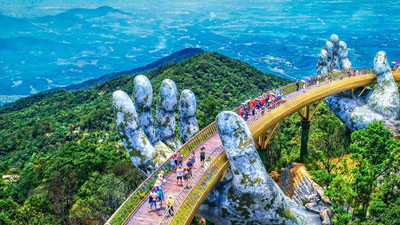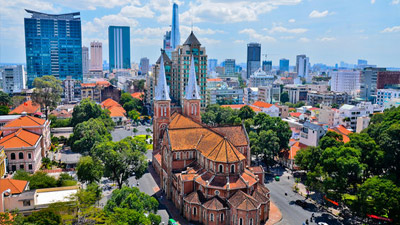Vietnam Biodiversity
 Vietnam is one of countries which have the richest biodiversity in the world with several types of forests, streams, lagoons, and coral reefs. Vietnam is the location of three among 200 ecological zones in the world according to the World Wild Fund (WWF). Birdlife International also listed Vietnam as one of 5 endemic bird zones of the world. Moreover, the International Union for Conservation of Na
Vietnam is one of countries which have the richest biodiversity in the world with several types of forests, streams, lagoons, and coral reefs. Vietnam is the location of three among 200 ecological zones in the world according to the World Wild Fund (WWF). Birdlife International also listed Vietnam as one of 5 endemic bird zones of the world. Moreover, the International Union for Conservation of Na
Diversity of eco-systems
Although Vietnam’s territory just covers an area of more than 330,000 square kilometers, there are several ecosystems that can be found in Vietnam including terrestrial ecosystems, wetland ecosystems and marine ecosystems.
Terrestrial ecosystems consist of forests, agricultural and urban areas. Among them, forests are characterized by rich biodiversity of both flora and fauna as tropical monsoon climate with high temperature and rainfall. Three quarters of Vietnam is mountains and hills; thus, tropical ever-green forest is the dominant ecosystem in Vietnam. In agricultural and urban areas, ecosystems are less diverse and mainly artificial.
Wetland ecosystems of Vietnam are very diverse and each has distinct features upon the conditions of geographical location and climate. Wetland ecosystems of Vietnam include coastal mangroves, peat swamps, lagoons, coral reefs, and the sea surrounding coastal islands. Coastal mangroves are home to many kinds of native and migrated animals such as birds, mammals, amphibians, reptiles. These are also the residence of many aquatic species like fish, shrimp, crab, etc. Peat swamps are specific to the Southeast Asia region. In Vietnam, two remained peat swamps are the upper U Minh and the lower U Minh in Mekong Delta. Along coastal area of the Central Vietnam, lagoons are common scenery with an abundant biodiversity. The residences in lagoons involve many species living in freshwater, brackish and salt water. Biological community in the lagoons experience significant changes upon seasons. Coral reefs and sea grass are typical for coastal area; and also home to many benthos and tiny fishes. Ecosystems of the sea surrounding coastal islands have similar features with ecosystems of coral reefs.
Marine ecosystems of Vietnam cover a huge area of more than 1,000,000 square kilometers. Therefore, marine resources of Vietnam are abundant and plentiful. In estimate, there is around 11,000 marine species inhabiting in 20 typical marine ecosystems.
Diversity of species
According to the scientists, Vietnam ranks 16th out of 25 countries which have the richest biodiversity in the world. On the mainland, there are 15.986 species of flora and 10% among them are endemic species. About fauna, there are more than 100 endemic species of birds and 78 endemic species of mammals. Wetland ecosystems inland also contribute approximately 1,500 species of algae, 800 species of invertebrate fauna and 700 kinds of fish. Marine and coastal ecosystems are featured with typical ecology of the tropics. As mentioned above, there is around 11,000 marine species inhabiting in 20 typical marine ecosystems. It’s involved 2,458 species of fish, 653 species of seaweeds; 657 species of zooplankton, phytoplankton with 537 species, 94 mangrove plant species, 225 species of shrimp.

Vietnam National Parks
Aiming at protecting rare and endangered species from deforestation, negative impacts of urbanization and climate changes, system of national parks in Vietnam has been widened and developed.
Vietnam Travel Guide
- Vietnam Overview
- Vietnam Geography
- Vietnam History
- Vietnam Ecology And Environment
- Vietnam Government And Politics
- Vietnam Economy
- Vietnam Demographics
- Vietnam Customs
- Vietnam Art Performance
- Vietnam Religions
- Vietnam Festivals
- Vietnam Gastronomy
- Get To Vietnam
- Vietnam Travel Tips
- Vietnam Travel Articles & News

 BEST TOURS
BEST TOURS



